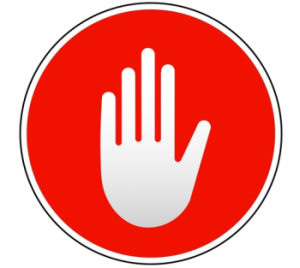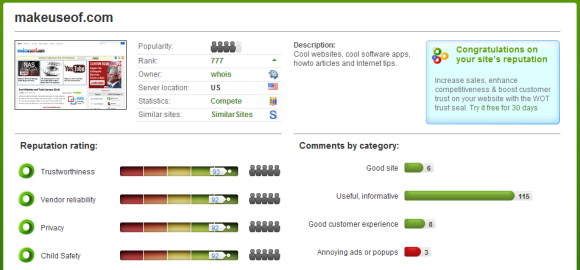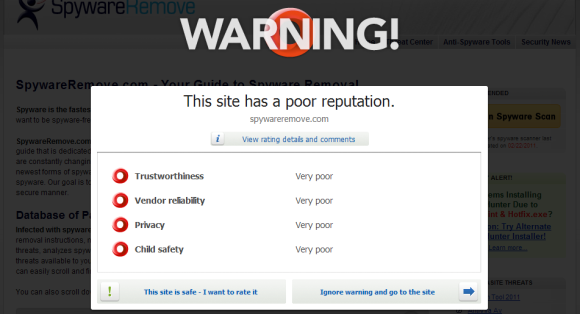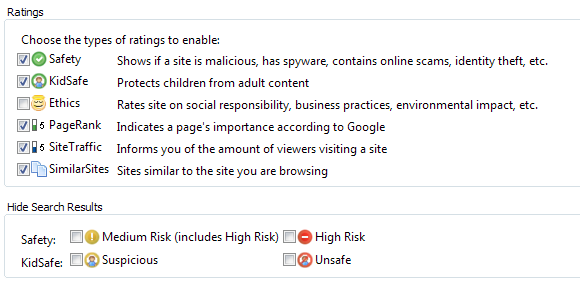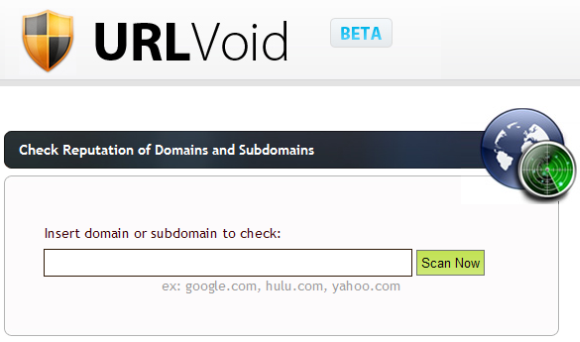The Internet is a breeding place for malware. New sites containing viruses, worms, keyloggers, and other malicious software are popping up every day. Once picked up and opened by an unsuspecting user, they hatch, infect the computer, and potentially wreck havoc on the system.
Malware causes worldwide economic damage in the multi-billion dollar range and even though users are ever more aware of good security practices, it continues to be a head-to-head race between malicious software and the defense against it. Many users catch malware through browsing online. Thus not visiting known sites with spyware and viruses in the first place is an effective way to keep the computer safe.
This articles shows you 3 resources that will lower your risk of visiting malicious sites by accident. Although you can search online domain lists for unsafe websites, a browser plugin is by far the most convenient way to automatically identify and avoid malicious websites.
Web Of Trust (WOT)
Type: Browser plugin, website
Service: website ratings based on user experience and domain listings
Supports: Firefox, Google Chrome, Internet Explorer, Safari, Opera, Bookmarklet
WOT does more than alert users about potential spyware and viruses. It's an all-around service that rates sites based on general trustworthiness, vendor reliability, privacy, and child safety. The ratings are conducted by its huge international community. Users can leave comments to further support their rating and point out specific problems with the respective page. Apart from user input, the site also relies on external resources, such as listings of phishing sites published on PhishTank.
The rating symbol appears both in search results and directly in the browser. The complete rating, including user comments, is available on the 'scorecard'.
If a user attempts to open a website with a bad rating, WOT issues a warning, which has to be discarded, before the site can be accessed.
WOT also offers a small online tool where you can manually 'check the reputation of your favorite website' based on its URL.
Alternatives: To my knowledge there are no comparable alternatives to WOT. Similar plugins either lack their own community or a broad support, some of the main features, e.g. no ratings next to search results, or only support one or two browsers. Other tools I tested include Trustpilot Guard (Firefox), TrendProtect (Internet Explorer) and McAfee SiteAdvisor (Firefox and Internet Explorer).
LinkExtend
Type: browser toolbar
Service: provides "meta-site-ratings for computer safety, child safety, company ethics, and popularity"
Supports: Firefox
LinkExtend is a Firefox toolbar, which includes a host of services compiled in the following categories: Safety, KidSafe, Ethical, Site Traffic, and Thumbnails. For its ratings it relies on a range of tools, such as WOT itself, Google Safe Browsing, Alexa, Scryve, and many more. If you do not trust any of the resources, you can turn off single ones via the LinkExtend options (button in the far right of the toolbar).
After installing the toolbar, a setup wizard guides you through the various options.
The ratings and thumbnails presented next to search results are some of the most comprehensive I have found. Moreover, you can highlight your keywords in search results by clicking the yellow marker symbol in the LinkExtend toolbar. If you find the information that is added too much, you can turn off select features via the toolbar options.
URLVoid & URLVoid VScan
Type: website
Service: website reputation based on multiple rating services and scan URLs for viruses
URLVoid is an online service that compiles ratings for websites and scans them for malicious content. It is important to note that these are two separate services!
To detect websites with a bad reputation, URLVoid relies on several resources, including Google Diagnostic, MalwareDomainList, PcTools Browser Defender, PhishTank, Norton SafeWeb, MyWOT, and many others. Results are compiled within a few seconds and the tool displays the rating status for each service below an overall summary. The permalink for a specific page (example: permalink for MakeUseOf) can be bookmarked and shared.
The scanning of URLs for viruses is facilitated by several antivirus engines, including Avast, AVG, AVira, Kaspersky, and many more. Unfortunately, this tool is not very quick and my query was promptly placed in slot number 16,946 of the queue. And instead of moving up the queue, it moved down the queue.
Let me say something about McAfee SiteAdvisor and TrendProtect [Broken URL Removed] which are not one of the best resources recommended in this article. Both McAfee and TrendSecure are well known brands within the computer security business. However, I found several problems with these browser plugins. First of all, a conspicious amount of websites rated unsatisfactory or poorly on WOT, received a safe rating from McAfee and TrendProtect. Moreover, some sites that were clearly found to be unsafe and malicious by WOT users, carry a McAfee SECURE stamp, meaning they were 'verified safe for e-commerce' and are 'tested daily for hacker vulnerabilities'. Disagreements far and wide! I cannot verify which rating system is right however. When in doubt I would rather go with the bad rating than trust the good one. Thus I recommend to stay away from McAfee SiteAdvisor.
Are you browsing with Firefox? Check out this post for the 10+ Best Firefox Security and Privacy Addons. For online resources, have a look at the article 4 Quick Sites That Let You Check if Links Are Safe.
How do you make sure your browsing is safe?
Image credits: Vaju Ariel

